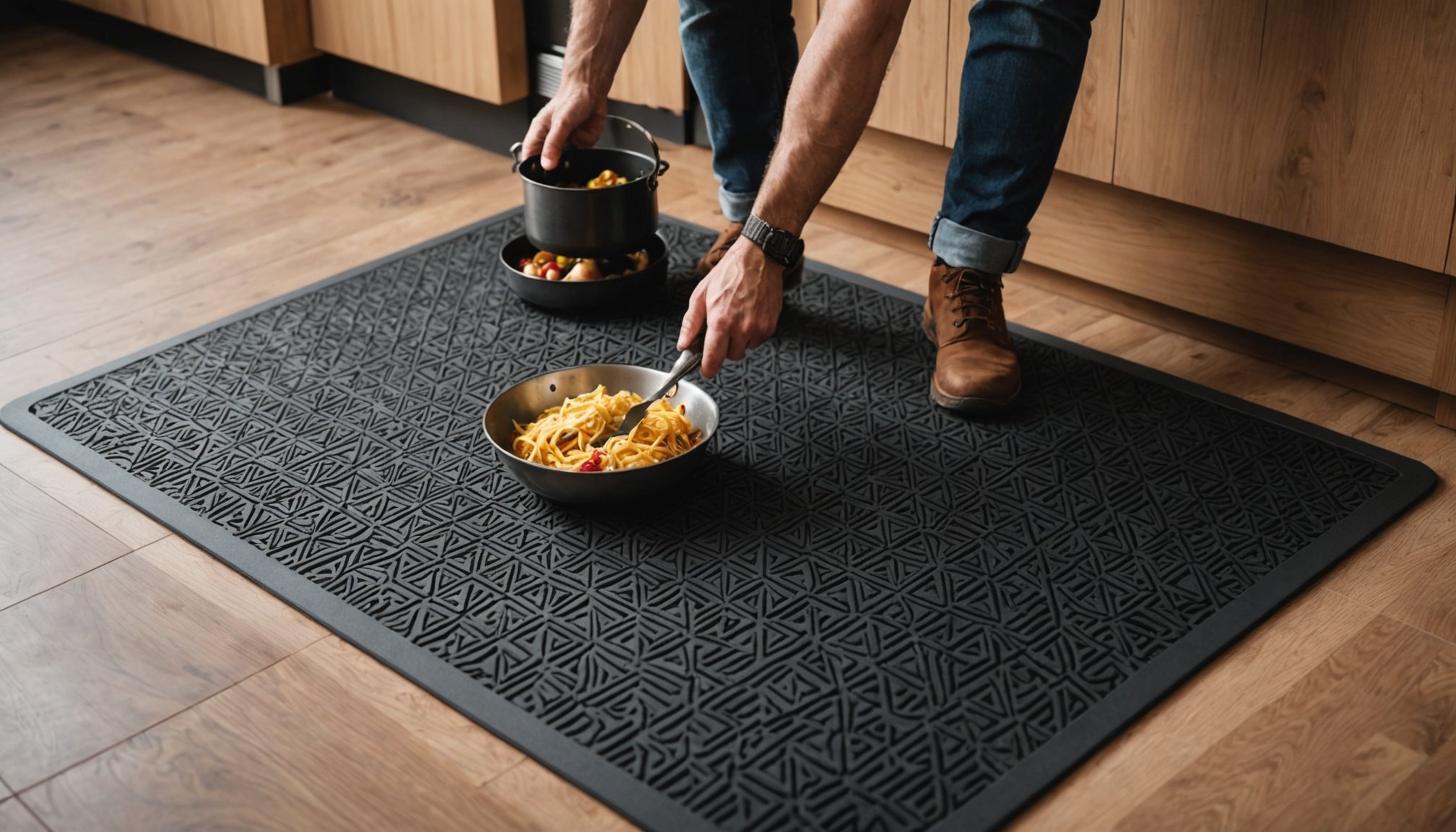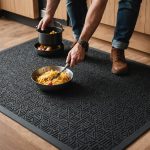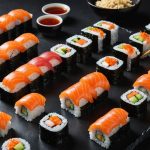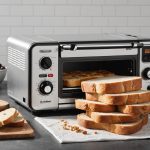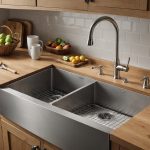Choosing the right material for your non-slip kitchen mat can transform your cooking experience, making it safer and more enjoyable. From comfort underfoot to ease of cleaning, materials vary widely. Understanding the options available empowers you to select the best fit for your kitchen's style and functionality. Discover how different materials impact safety and maintenance, ensuring every step in your kitchen is secure and pleasant.
Understanding Non-Slip Kitchen Mats
Exploring the significance of safety in kitchen environments
In the same genre : Discover the Key Features of a Yogurt Maker for Crafting Perfect Homemade Yogurt!
Importance of Non-Slip Properties
In bustling kitchen environments, non-slip kitchen mats are essential for preventing accidents. These mats are designed to provide traction, reducing the risk of slips and falls. The non-slip properties are crucial, especially in areas prone to spills and moisture. This feature ensures a safer workspace, allowing for confident movement even in high-traffic zones.
Common Uses and Benefits
Non-slip kitchen mats are versatile and can be used in various settings, from home kitchens to professional culinary spaces. They offer numerous benefits, including enhanced safety and comfort. By cushioning the feet, they help reduce fatigue during long cooking sessions. Additionally, these mats protect floors from wear and tear, extending their lifespan.
Also to discover : Discover the Key Features of a Yogurt Maker for Crafting Perfect Homemade Yogurt!
Benefits of Non-Slip Kitchen Mats:
- Increased safety and reduced accident risk
- Enhanced comfort and reduced fatigue
- Floor protection and durability
Factors Affecting Mat Selection
When selecting a kitchen safety mat, it is important to consider factors such as material, thickness, and size. The right choice depends on the specific needs of the kitchen environment. Materials like rubber provide excellent grip, while anti-fatigue options offer added comfort. Assessing these factors ensures that the mat not only enhances safety but also usability.
Material Options for Non-Slip Kitchen Mats
Exploring diverse materials for optimal kitchen safety
Rubber Mats
Rubber mats are a popular choice due to their exceptional grip features. These mats are designed with textured surfaces that enhance traction, making them ideal for kitchen environments where spills are common. The durability of rubber ensures long-lasting performance, even in high-traffic areas. Furthermore, rubber mats are resistant to moisture, which adds to their safety attributes.
Vinyl Mats
Vinyl mats offer a combination of durability and ease of cleaning, making them suitable for both home and commercial kitchens. These mats are often lightweight, allowing for easy repositioning and maintenance. Vinyl's smooth surface makes it simple to wipe clean, ensuring hygiene in food preparation areas. However, it's important to check the mat's grip, as some vinyl options may not provide the same level of traction as rubber.
Fabric Mats
While fabric mats prioritize comfort, they might compromise on safety. These mats are cushioned, offering relief during prolonged standing. However, their non-slip capabilities can vary significantly. It's crucial to select fabric mats with a non-slip backing to prevent accidental slips. Balancing comfort with safety is key when choosing fabric mats for kitchen use.
Key Considerations:
- Rubber: Excellent grip, moisture-resistant
- Vinyl: Durable, easy to clean
- Fabric: Comfortable, needs non-slip backing
Advantages and Disadvantages of Each Material
Exploring the pros and cons of kitchen mats for informed decisions
Rubber Mats
Rubber mats are renowned for their exceptional traction and longevity, making them a reliable choice for kitchen safety. Their textured surfaces provide superior grip, reducing the risk of slips. However, a potential downside is the odor that may emanate from certain rubber products, which can be off-putting to some users. Despite this, their durability often outweighs this minor inconvenience.
Vinyl Mats
Vinyl mats stand out for their affordability and ease of maintenance. These mats are simple to clean and reposition, making them practical for busy kitchens. However, they may lack the cushioning found in other materials, which could lead to discomfort during extended use. Users should weigh the benefits of cost and maintenance against the need for comfort.
Fabric Mats
Fabric mats offer aesthetic appeal and comfort, providing relief during long periods of standing. However, they are typically less effective for slip resistance compared to rubber or vinyl options. To maximize safety, it's essential to choose fabric mats with a non-slip backing.
Pros and Cons of Kitchen Mats:
- Rubber: Superior traction, long-lasting, potential odor
- Vinyl: Cost-effective, easy to clean, less cushioning
- Fabric: Visually appealing, comfortable, less slip-resistant
Selecting the Right Material Based on Kitchen Use
Choosing the ideal kitchen mat is crucial for safety and comfort.
High-Traffic vs. Low-Traffic Areas
When choosing kitchen mats, it's essential to consider the level of foot traffic. High-traffic areas, such as professional kitchens, benefit from rubber mats due to their durability and excellent grip. Conversely, low-traffic areas might opt for vinyl mats, which offer easy maintenance and sufficient traction for less demanding environments.
Specific Uses
The purpose of the kitchen mat can significantly influence kitchen mat selection criteria. For tasks involving prolonged standing, such as cooking or cleaning, anti-fatigue mats are advantageous. These mats provide cushioning to reduce fatigue. Meanwhile, areas primarily used for quick tasks might prioritize mats that are easy to clean and reposition, like vinyl or rubber options.
Personal Preferences
Personal style and color choices are also integral to kitchen mat selection criteria. Aesthetically pleasing fabric mats can complement kitchen decor but ensure they have a non-slip backing. Consider the kitchen's color scheme and existing design elements to select a mat that harmonizes with the overall look.
Key Considerations for Choosing Kitchen Mats:
- High-Traffic: Rubber for durability
- Low-Traffic: Vinyl for ease of maintenance
- Task-Specific: Anti-fatigue for comfort
- Style: Fabric with non-slip backing for aesthetics
Maintenance Tips for Non-Slip Kitchen Mats
Ensuring longevity and cleanliness of kitchen mats
Regular Cleaning Methods
Maintaining non-slip kitchen mats involves specific cleaning techniques tailored to the mat's material. For rubber mats, a simple solution of mild detergent and warm water is effective. Regularly wiping down the surface prevents the buildup of grime. Vinyl mats benefit from a similar approach, but they can also be vacuumed to remove debris before wiping. Fabric mats require a more delicate touch; using a vacuum or gentle brush helps maintain their appearance and non-slip properties.
Stain Removal Tips
Different materials require distinct strategies for stain removal. For rubber mats, a mixture of baking soda and water can lift stubborn stains. Vinyl mats respond well to a vinegar and water solution, which tackles tough spots without damaging the surface. Fabric mats may need a specialized carpet cleaner to address deep stains while preserving the mat's integrity.
Importance of Checking for Wear
Regularly inspecting non-slip kitchen mats for signs of wear is crucial. Over time, even the most durable mats can lose their effectiveness. Replace mats showing significant wear or reduced traction to maintain a safe kitchen environment. This proactive approach ensures that kitchen mat care remains a priority, providing both safety and cleanliness.
User Reviews and Experiences
Insights into consumer feedback on kitchen mats
Summary of Top-Rated Non-Slip Kitchen Mats
Consumer feedback highlights several top-rated non-slip kitchen mats that stand out for their performance and reliability. Users consistently praise mats made from rubber for their superior grip and durability, especially in high-traffic areas. Vinyl mats receive commendations for their ease of maintenance, although some users note a lack of cushioning. Meanwhile, fabric mats are favored for their aesthetic appeal, provided they include a non-slip backing.
Comparison of User Satisfaction Across Different Materials
User satisfaction varies significantly across different kitchen mat materials. Rubber mats often receive high marks for safety and longevity, though some users mention an initial odor. Vinyl mats are appreciated for affordability and cleanliness, but they sometimes fall short in comfort. Fabric mats delight users with their designs, yet their slip resistance is a common concern.
Common Issues and Praises from Users
- Rubber: Excellent traction, potential odor issue
- Vinyl: Easy to clean, lacks cushioning
- Fabric: Visually appealing, requires non-slip backing
Consumer experiences with kitchen mats underscore the importance of selecting the right material based on individual needs. By considering these reviews, users can make informed decisions that align with their kitchen environment and personal preferences.
Product Comparisons and Recommendations
Identifying the best non-slip kitchen mats for your needs
Side-by-Side Comparison
When seeking the best non-slip kitchen mats, a side-by-side comparison can be invaluable. This approach highlights key features and helps identify the most suitable options based on user reviews and expert opinions. For example, rubber mats are often praised for their excellent traction and durability, making them ideal for high-traffic areas. In contrast, vinyl mats are noted for ease of maintenance and affordability, though they may lack the cushioning provided by other materials.
Recommended Products
Based on comprehensive user feedback and expert assessments, several non-slip kitchen mats stand out. Rubber mats like the Chef's Comfort series are highly recommended for their superior grip and longevity. For those prioritizing easy cleaning, the vinyl mats from KitchenPro offer a practical solution. If aesthetics are a priority, consider fabric mats with a non-slip backing, such as the Cozy Kitchen collection.
Price Ranges and Budget Considerations
Budget is a crucial factor when selecting the best non-slip kitchen mats. Here's a brief overview of price ranges:
| Material | Price Range |
|---|---|
| Rubber | $30-$70 |
| Vinyl | $20-$50 |
| Fabric | $25-$60 |
These options ensure you can find a suitable mat that aligns with both your safety needs and financial considerations.
Visual Aids for Understanding Material Properties
Enhancing comprehension through visual representation
Infographics and Comparisons
Understanding the differences between kitchen mat materials can be greatly enhanced with visual aids. Infographics provide a clear comparison of material features and benefits, making it easier to grasp the key attributes of each option. By illustrating aspects such as slip resistance and durability, these visuals help users make informed decisions.
Photos in Kitchen Settings
Photos showcasing different kitchen mats in various settings offer practical insights into how each material looks and functions in real environments. These images can highlight the aesthetic appeal of fabric mats or the robust nature of rubber mats. Seeing these mats in action aids in visualizing their integration into a kitchen space.
Diagrams of Slip Resistance Testing
Diagrams illustrating slip resistance testing results are invaluable for understanding how each material property contributes to safety. These visuals can depict the effectiveness of rubber versus vinyl in preventing slips, providing a scientific perspective on their performance.
Key Visual Aids:
- Infographics: Highlight material features
- Photos: Showcase mats in kitchens
- Diagrams: Illustrate slip resistance results
Visual aids serve as powerful tools to convey complex information about kitchen mat materials, enabling users to evaluate options with confidence.
Safety Standards and Certifications
Ensuring reliability through recognized standards and certifications
Overview of Safety Standards
Understanding non-slip safety standards is crucial when selecting kitchen mats. These standards, often established by industry bodies, ensure that mats provide adequate traction and reduce slip risks. Compliance with such standards indicates that a product has undergone rigorous testing to verify its non-slip properties. For example, the ANSI/NFSI B101.1 standard specifically evaluates the slip resistance of floor coverings, including mats.
Importance of Certifications
Mat certifications play a pivotal role in product selection. Certifications from reputable organizations serve as a mark of quality and safety, assuring consumers that the products meet established non-slip safety standards. When a kitchen mat carries a certification, it signifies adherence to stringent testing protocols, offering peace of mind to users.
Identifying Certified Products
To identify certified non-slip products, look for labels or documentation from recognized bodies. These may include logos or certification numbers on packaging or product descriptions. Certified products typically display a higher level of reliability and performance, making them a preferred choice for safety-conscious consumers.
Key Considerations:
- ANSI/NFSI B101.1: Slip resistance evaluation
- Certification Labels: Indicators of compliance
- Consumer Assurance: Enhanced trust in product safety
By focusing on these aspects, consumers can confidently choose mats that align with essential non-slip safety standards and mat certifications.
Conclusion and Final Thoughts
Recapping essential considerations for selecting a kitchen mat
Recap of Key Points
Selecting the right kitchen mat involves understanding various factors such as material, safety, and usability. Rubber mats are ideal for high-traffic areas due to their durability and superior traction. Vinyl offers easy maintenance and is suitable for low-traffic zones. Fabric mats, while aesthetically pleasing, should have a non-slip backing to ensure safety.
Prioritizing Safety and Usability
When choosing a kitchen mat, prioritize both safety and usability. Consider the level of foot traffic and specific tasks performed in the kitchen. Anti-fatigue options are beneficial for reducing discomfort during prolonged standing periods. Ensuring the mat meets non-slip safety standards is crucial for a secure kitchen environment.
Final Recommendations
To make an informed choice, evaluate the following:
- Material: Choose based on kitchen use and traffic.
- Safety: Ensure compliance with safety standards.
- Usability: Consider ease of cleaning and comfort.
Recommended Products:
| Material | Recommended Use |
|---|---|
| Rubber | High-traffic, durable |
| Vinyl | Low-traffic, easy clean |
| Fabric | Aesthetic, non-slip |
By considering these aspects, you can confidently select the best kitchen mat that aligns with your needs, ensuring both safety and functionality in your culinary space.

